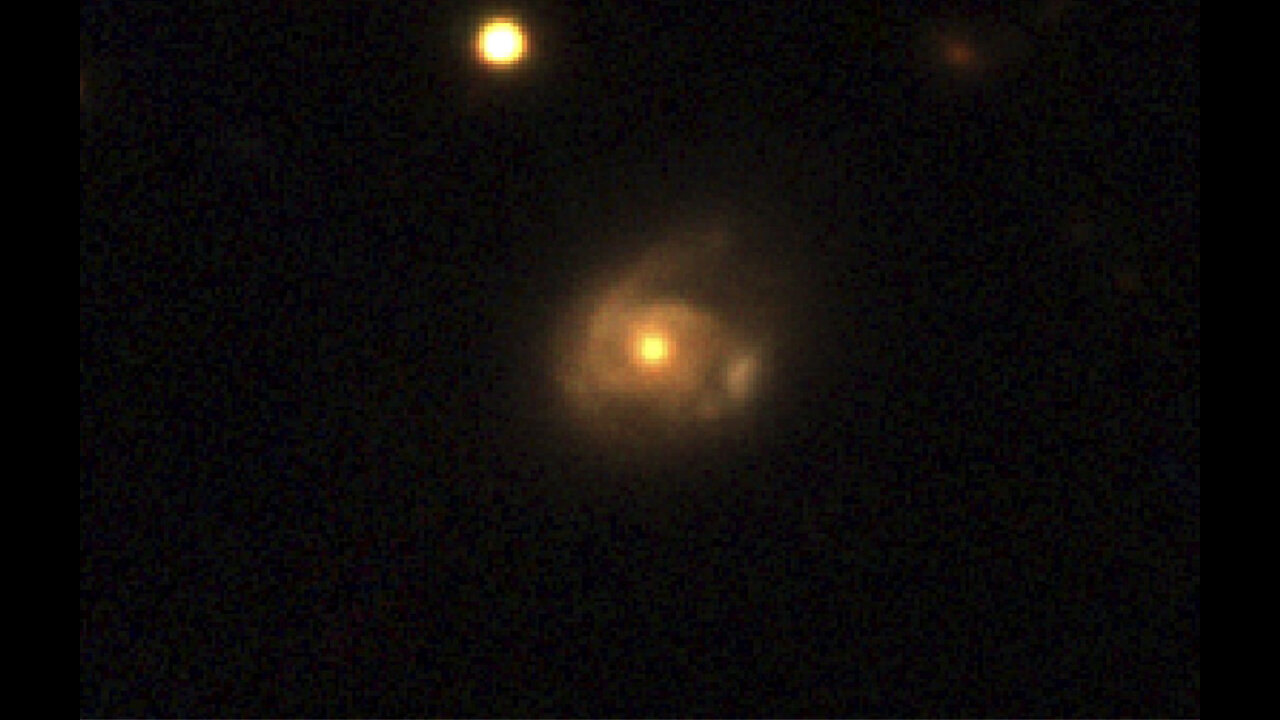Premium Only Content

| Swift Spots | a Snacking | Black Hole | Using a | New Trick |
Using NASA’s Neil Gehrels Swift Observatory, which launched in 2004, scientists have discovered a black hole in a distant galaxy repeatedly nibbling on a Sun-like star. The object heralds a new era of Swift science made possible by a novel method for analyzing data from the satellite’s X-ray Telescope (XRT).
When a star strays too close to a monster black hole, gravitational forces create intense tides that break the star apart into a stream of gas. The leading edge swings around the black hole, and the trailing edge escapes the system. These destructive episodes are called tidal disruption events. Astronomers see them as flares of multiwavelength light created when the debris collides with a disk of material already orbiting the black hole.
Recently, astronomers have been investigating variations on this phenomena, which they call partial or repeating tidal disruptions.
During these events, every time an orbiting star passes close to a black hole, the star bulges outward and sheds material, but survives. The process repeats until the star loses too much gas and finally breaks apart. The characteristics of the individual star and black hole system determine what kind of emission scientists observe, creating a wide array of behaviors to categorize.
On June 22, 2022, the XRT captured Swift J0230 for the first time. It lit up in a galaxy around 500 million light-years away in the northern constellation Triangulum. Swift’s XRT has observed nine additional outbursts from the same location roughly every few weeks.
Scientists propose that Swift J0230 is a repeating tidal disruption of a Sun-like star orbiting a black hole with over 200,000 times the Sun’s mass. They estimate the star loses around three Earth masses of material on each pass. This system provides a bridge between other types of suspected repeating disruptions and allowed scientists to model how interactions between different star types and black hole sizes affect what we observe.
Swift J0230’s discovery was possible thanks to a new, automated search of XRT observations called the Swift X-ray Transient Detector.
After the instrument observes a portion of the sky, the data is transmitted to the ground, and the program compares it to previous XRT snapshots of the same spot. If that portion of the X-ray sky has changed, scientists get an alert. In the case of Swift J0230, astronomers were able to rapidly coordinate additional observations of the region.
-
 LIVE
LIVE
Times Now World
2 days agoLIVE | Putin in Military Gear Leads Massive Zapad 2025 Drills With 100,000 Troops | TIMES NOW WORLD
2,364 watching -
 15:03
15:03
Nate The Lawyer
1 day ago $0.28 earnedFirst Former Illegal Alien Elected To City Council Deported To Prison By Feds. @DLAW_
25.2K12 -
 28:26
28:26
DeVory Darkins
13 hours ago $12.94 earnedDemocrats BEG FOR MERCY after Kimmel suspension as Trump drops bomb on terrorist left
154K86 -
 8:07
8:07
The Officer Tatum
17 hours agoScott Jennings UNLEASHES On CNN Panel FEELING SORRY FOR SHOOTER
130K130 -
 2:05:40
2:05:40
Inverted World Live
10 hours agoThe Simulation is Burning & Missile Hits UFO in China | Ep. 110
159K20 -
 2:00:48
2:00:48
The Charlie Kirk Show
8 hours agoTHOUGHTCRIME Ep. 97 — The Thoughtcrime WILL Continue
137K96 -
 35:08
35:08
Colion Noir
14 hours agoA Bear, an AR-15, and a Home Invasion
43.7K7 -
 3:05:55
3:05:55
TimcastIRL
10 hours agoJimmy Kimmel Refuses To Apologize Over Charlie Kirk Comments, Blames Gun Violence | Timcast IRL
206K193 -
 2:44:24
2:44:24
Laura Loomer
12 hours agoEP144: Trump Cracks Down On Radical Left Terror Cells
61.1K26 -
 4:47:56
4:47:56
Drew Hernandez
15 hours agoLEFTISTS UNITE TO DEFEND KIMMEL & ANTIFA TO BE DESIGNATED TERRORISTS BY TRUMP
56.1K24